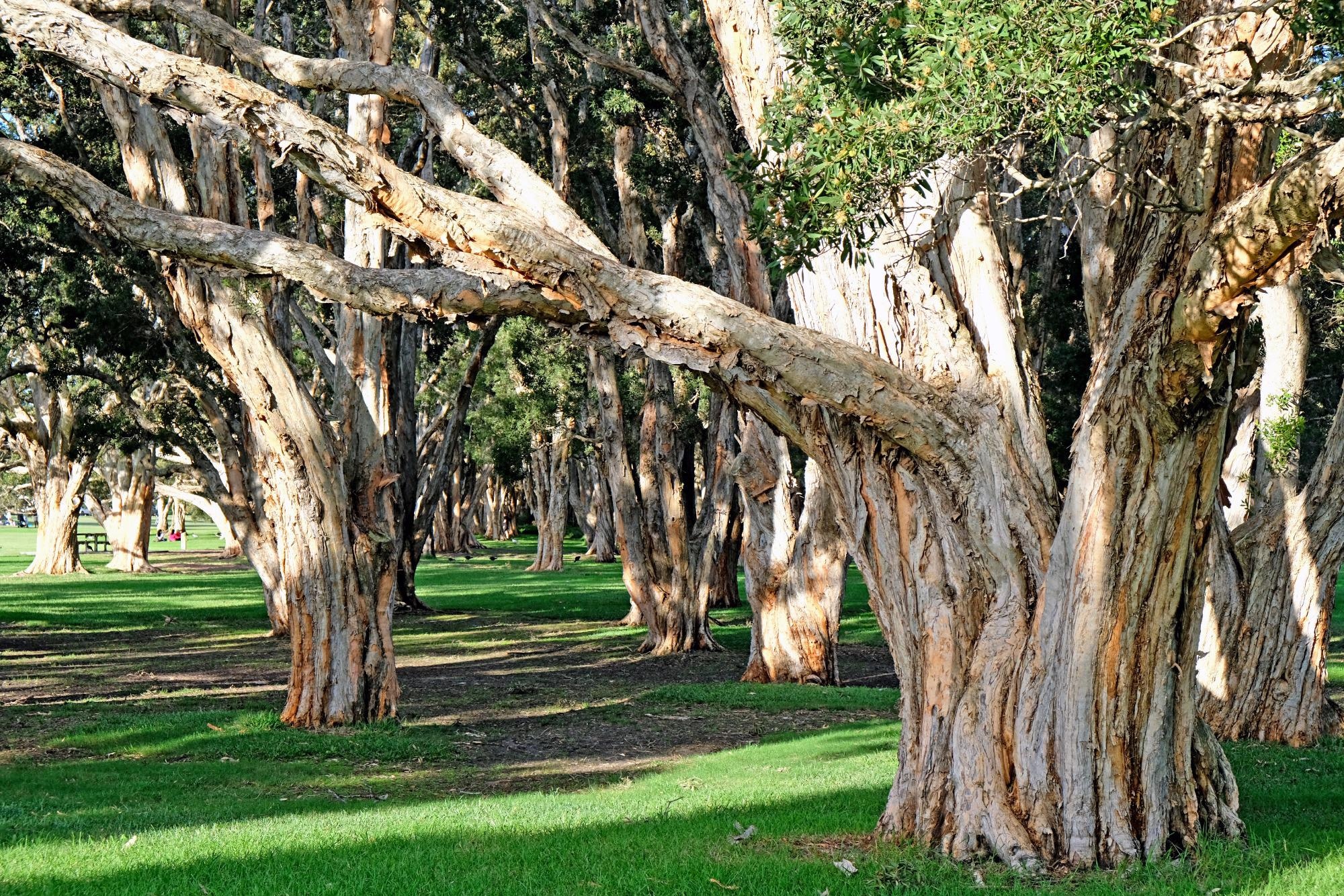
MagSpace / Shutterstock.com
A newly discovered bacteria could help offset methane produced by trees and assist in a strategy that could ultimately combat climate change.
It's common knowledge that trees are vital to removing carbon dioxide from the atmosphere. Reducing carbon dioxide levels is key in greenhouse gas cutting measures that could mitigate climate change. What is much less well-known is that trees also emit methane — a greenhouse gas that on a one-to-one basis can make a greater contribution to climate change than carbon dioxide.
However, a new paper published in the journal Nature Communications¹ suggests there is a reason why we shouldn't have to worry about trees' methane contribution increasing greenhouse gases and driving climate change.
The team of researchers hailing from the geosciences department of the Southern Cross University, Lismore, NSW, Australia, has discovered communities of bacteria within the bark of a common Australian tree — the paperbark — that costume methane produced by the tree.
The authors say that these communities of methane-oxidizing bacteria (MOBs) were 'abundant, and thriving' and reduced methane emissions from the paperback by about a third, thus preventing it from entering the atmosphere.
The team's research could help scientists better understand the role of trees in the global methane cycle and their place in the wider climate change mosaic.
This discovery will revolutionise the way in which we view methane emitting trees and the novel microbes living within them. Only through understanding why, how, which, when and where trees emit the most methane, may we more effectively plant forests that effectively draw down carbon dioxide while avoiding unwanted methane emissions.
Luke Jeffrey, Postdoctoral Research Fellow and Lead Author of the paper, Southern Cross University
The Tree/Methane Connection
Research regarding methane emissions from trees is still in its relative infancy, despite the fact that the first hints began to appear in academia as early as 1907. The research, by Francis W. Bushong, a chemistry professor at the University of Kansas, published in the journal Chemical and Physical Papers, was largely derided and quickly became an obscure footnote.
It was only in 2018, after the release of a comprehensive review², that researchers really began to sit up and take notice of the tree/methane connection. This led to teams of scientists setting out to measure methane flowing from trees in locations as varied as the vast forests of the Amazon basin, Borneo's peatlands, and upland woods from the US to China.
Some of the results that would emerge from these separate research projects would be shocking, to say the least; particularly the discovery that 50% of the total methane emissions from the Amazon basin could be attributed to its trees. This research was replicated in other locations such as Australia's low-lying subtropical forests. Ultimately, a connection was drawn that implies wetlands are the areas in which trees produce the most methane.
Currently, researchers aren't exactly sure from where these methane emissions originate. There is some evidence that tree-emitted methane is being drawn from the soil, transported to the surface by root systems and stems, and then released through the bark. Some research suggests tree stems are mostly responsible for these emissions.
Both of these possible origins result in a quirk that could make dead trees a bigger emitter of methane than live ones. Thus, the problem of tree-produced methane is compounded by the fact that researchers have actually found that dead trees not only continue to emit methane, but they can do so at rates up to 8 times as high as living trees³.
That means that climate change could cause a positive feedback loop. As trees are removed, they can no longer soak up carbon dioxide, and the stumps and detritus they leave behind emit more methane.
Fortunately, nature could have already devised its own mechanism to tackle these tree-related methane emissions. Just as animal life takes care of trees' oxygen waste, another life-form is exploiting its methane emissions.
The Methane Eaters
To conduct this new research, the team took samples of microbial communities in the paperback's bark, finding it homes a methane-consuming bacteria.
The organism they found took methane and oxidized it producing carbon dioxide — still a greenhouse gas but one at least 34 times less potent — reducing the total methane emission by as much as 36%. These bacteria made up a surprisingly large proportion of the total bacteria that makes the bark its home, accounting for 25% of the total bacteria.
The team believes that their findings could help projects such as the global tree-repopulation movement, which aims to reforest large areas and bolster the globe's tree population by 1 trillion planets. By considering this research, trees could be planted in areas where the MOBs can prosper and, thus, they can best offset methane emissions.
References
1. Jeffrey. L. C., Maher. D. T., Chiri. E., et al, [2021], 'Bark-dwelling methanotrophic bacteria decrease methane emissions from trees,' Nature Communications, [https://doi.org/10.1038/s41467-021-22333-7]
2. Covey. K. R., Megonigal. J. P., [2018], 'Methane production and emissions in trees and forests,' New Phytologist Foundation, [https://doi.org/10.1111/nph.15624]
3. Kreuzwieser. J., Buchholz. J., Rennenberg. H., [2008], 'Emission of Methane and Nitrous Oxide by Australian Mangrove Ecosystems,' Planet Biology, [https://doi.org/10.1055/s-2003-42712]
Disclaimer: The views expressed here are those of the author expressed in their private capacity and do not necessarily represent the views of AZoM.com Limited T/A AZoNetwork the owner and operator of this website. This disclaimer forms part of the Terms and conditions of use of this website.